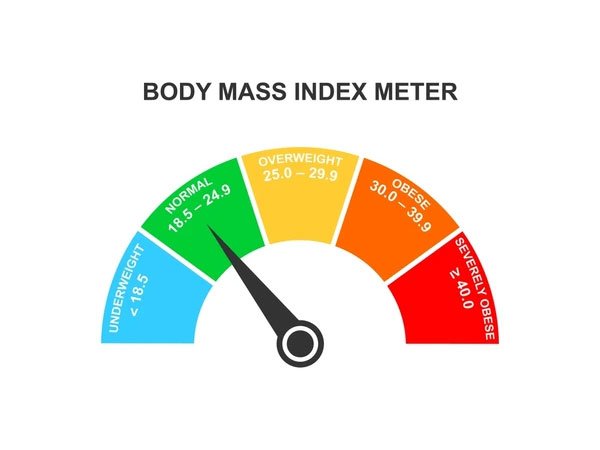VMPL
New Delhi [India], October 10: Maintaining a healthy weight is essential for overall well-being, and one of the most effective ways to track your health goals is by using the Body Mass Index (BMI). The BMI calculator is a widely used tool that helps determine whether you fall within a healthy weight range based on your height. This article will provide a detailed BMI chart for men and women, explain how to calculate your BMI, and guide you on using the weight according to height chart to monitor your health.
What is BMI?
Body Mass Index (BMI) is a simple calculation that uses your height and weight to categorise your body weight. It serves as an indicator of whether you are underweight, normal weight, overweight, or obese. The BMI calculator is an easy and reliable way to assess your health risks related to weight, helping you make informed decisions about your health and fitness goals.
How to calculate your BMI
Calculating your BMI is straightforward. The BMI formula is calculated by dividing your weight in kilograms by the square of your height in metres.
Alternatively, you can use an online BMI calculator for quick and accurate results. All you need to do is enter your height and weight, and the calculator will do the rest.
Understanding the BMI categories
The BMI chart is divided into different categories, which help you understand your weight status:
* Underweight: BMI less than 18.5
* Normal weight: BMI between 18.5 and 24.9
* Overweight: BMI between 25 and 29.9
* Obesity Class I: BMI between 30 and 34.9
* Obesity Class II: BMI between 35 and 39.9
* Obesity Class III (Morbidly Obese): BMI 40 and above
These categories help identify whether your weight is within a healthy range, and they also provide guidance on potential health risks associated with your weight status.
BMI chart for men and women
Here is a BMI chart that you can use to check your weight status based on your height. It is suitable for both men and women:

This chart helps you determine your ideal weight according to your height. You can easily find your height in the left column and check the weight ranges to see which category you fall into.
How to use the BMI chart to track your health goals
The BMI chart serves as a helpful guide in setting and tracking your health goals:
1. Determine your current BMI: Calculate your BMI using the formula or a BMI calculator and locate your weight category in the chart.
2. Set realistic goals: If your BMI falls into the overweight or obese category, aim to bring it down to the normal weight range through diet and exercise. If you are underweight, focus on a balanced diet to reach a healthy BMI.
3. Monitor your progress: Regularly check your weight and BMI to track your progress toward your health goals. Make adjustments to your diet and exercise routine as needed.
Limitations of the BMI chart
While the BMI chart is a useful tool, it does have some limitations:
* Does not differentiate between fat and muscle: BMI does not account for muscle mass, so individuals with high muscle content may have a high BMI even if they are healthy.
* May not be suitable for all age groups: The BMI chart is not as accurate for older adults, children, or athletes with higher muscle mass.
* Does not consider distribution of fat: BMI does not provide information about where fat is distributed in the body, which is an important factor in assessing health risks.
Alternatives to BMI
If you want a more comprehensive view of your health, consider these alternatives to the BMI calculator:
1. Waist-to-height ratio: This measures the ratio of your waist circumference to your height and is a better indicator of abdominal fat.
2. Body fat percentage: This method calculates the percentage of fat in your body and is considered more accurate in assessing health risks.
3. Waist-to-hip ratio: This measures the proportion of your waist circumference to your hip circumference, helping to identify the risk of health problems related to fat distribution.
Conclusion
The BMI calculator and the weight according to height chart are effective tools for tracking your health goals and understanding your weight status. However, it is essential to remember that BMI is just one indicator of health, and other factors such as muscle mass, body fat percentage, and fat distribution also play a significant role in determining overall health. Use the BMI chart as a starting point to assess your weight and health goals, but consider incorporating other measurements and healthy lifestyle changes to achieve a comprehensive understanding of your fitness. Always consult a healthcare professional for personalised advice and guidance on your journey to better health.
(ADVERTORIAL DISCLAIMER: The above press release has been provided by VMPL. ANI will not be responsible in any way for the content of the same)

